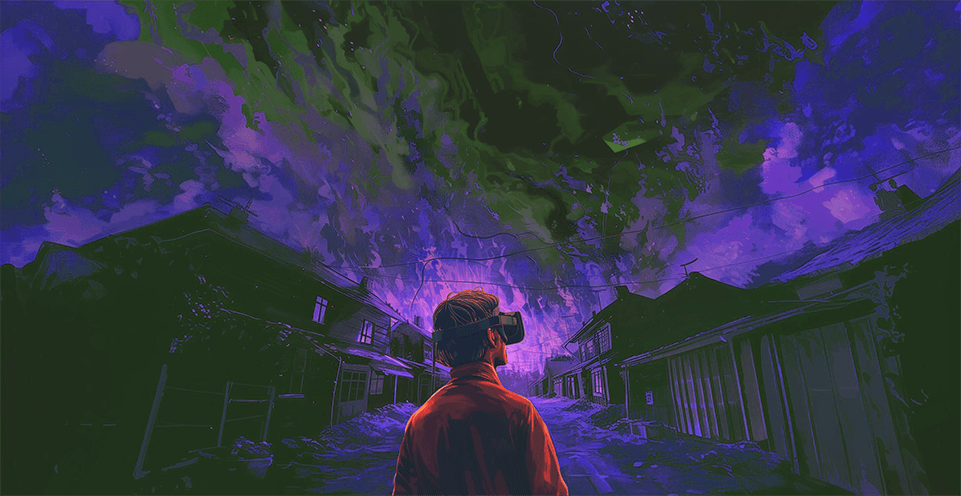Extinguishing the Fuse
Sirens are blaring and smoke is billowing from the shattered windows of a burning building. A Ukrainian flag gently flaps in the wind. Wearing a virtual reality headset, you step into this world as an avatar where images, vibrations and even smells combine to create a realistic facsimile of a country torn by war.
The Virtual Ukraine Project is the latest iteration of a landmark VR therapy tool, BRAVEMIND, developed by a team led by Albert “Skip” Rizzo, director for medical virtual reality at the USC Institute for Creative Technologies, to help assess and treat post-traumatic stress disorder in veterans. Since its introduction, BRAVEMIND has supplemented traditional therapy for other sufferers of PTSD. This version is being applied to help address PTSD in Ukrainian civilians and warfighters.
‘Hard medicine for a hard problem’
It may sound counterintuitive, but having someone gradually relive a traumatic experience can, in a controlled environment monitored by a therapist, allow the person to confront and reprocess the trauma, reducing its impact over time, Rizzo explained. Eventually, he said, the amygdala — the almond-shaped mass of gray matter in the brain that is involved with the experience of emotions — learns not to trigger the trauma. Patients typically undergo 10 sessions lasting 90 minutes each.
“It’s what we call ‘extinction learning’ in therapy,” Rizzo said. “It’s hard medicine for a hard problem, but we’ve done the science to document the value of this therapy.”
Now, funds are being raised for the long-term development of the Virtual Ukraine Project, Rizzo said.
“I believe this stuff should be apolitical,” Rizzo noted. “As an ethical and professional psychologist, I need to maintain an unbiased view toward treating people suffering from the impact of psychological trauma.”
Its time has come
In the coming months, Rizzo and his team plan to roll out a similar VR tool for victims of sexual trauma. A research paper published in 2019 detailed how the tool yielded clinically meaningful and statistically significant reductions in PTSD, with no adverse events.
BRAVEMIND has been distributed to more than 170 clinical sites and continues to be implemented by the U.S. Department of Veterans Affairs. In fact, one early beneficiary of the tool is Chris Merkle, whose war-induced PTSD nearly ruined his marriage and caused other problems. He went on to earn a doctorate in psychology and is practicing at the Veterans Affairs Medical Center in Loma Linda, California.
USC Viterbi also makes it available to non-VA clinicians.
Rizzo started working on VR therapy when he joined USC in 1995. He had been practicing as a clinician specializing in brain injury rehabilitation but had become frustrated with the tools available at the time. Most things were paper-and-pencil workbook exercises that were designed for children and only slightly modified for adults, he said.
While the early VR tools he created were used to treat children with attention deficit disorder and people with Alzheimer’s disease, for example, and to make physical rehabilitation more engaging for people recovering from strokes or other neurological injuries, now, nearly 30 years later, VR is being leveraged to treat and promote general wellness, as well.
“It took a while,” Rizzo said. “But in the last couple of years, the technology finally has caught up with the vision.”




